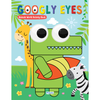Science isn't limited to labs and textbooks—it’s in every soap bubble, shadow, and splash of water! Children are natural explorers, and the best way to teach them science is by turning everyday moments into fascinating discoveries.
Here are a few super-easy science experiments that kids can try at home using basic items. These activities not only make learning exciting, but they also give children the joy of discovering how things work—all while having fun!
🧼 1. Bubble Geometry
Concept: Surface Tension
Adult Supervision: Not required
Materials: Dish soap, water, straw, bowl
What Happens: Bubbles always form spherical shapes due to surface tension — the shape with the least surface area for a given volume.
🌋 2. Volcano Eruption
Concept: Acid-Base Reaction
Adult Supervision: Recommended
Materials: Baking soda, vinegar, dish soap, red food coloring
What Happens: The reaction between baking soda and vinegar creates carbon dioxide, resulting in a foamy eruption that mimics a real volcano.
🧴 3. Soda Geyser
Concept: Rapid Nucleation
Adult Supervision: Recommended (outdoor activity)
Materials: 2L soda bottle, Mentos
What Happens: The rough surface of Mentos causes CO₂ to rapidly release from the soda, launching a dramatic soda geyser into the air.
🌈 4. Rainbow in a Jar
Concept: Liquid Density
Adult Supervision: Recommended
Materials: Honey, dish soap, colored water, oil
What Happens: Different liquids stack in layers without mixing due to their varied densities, forming a rainbow in a jar.
💧 5. Water Refraction Trick
Concept: Light Refraction
Adult Supervision: Not required
Materials: Glass of water, paper with arrow
What Happens: The arrow appears to flip direction when viewed through the glass, showing how light bends through water.
✂️ 6. Paper Spinner (Twirly Whirly)
Concept: Air Resistance
Adult Supervision: Not required
Materials: Paper, scissors, paperclip
What Happens: The spinner twirls as it falls due to drag — demonstrating how parachutes slow down falling objects.
🥚 7. Floating Egg
Concept: Density
Adult Supervision: Not required
Materials: Water, salt, egg
What Happens: The egg floats in saltwater because the added salt increases the water’s density.
🧲 8. Magnet Maze
Concept: Magnetism
Adult Supervision: Not required
Materials: Magnet, paperclip, paper maze
What Happens: Kids move the paperclip through the maze using a magnet underneath the paper, demonstrating magnetic force.
📞 9. String Telephone
Concept: Sound Vibration
Adult Supervision: Not required
Materials: 2 paper cups, string
What Happens: Vibrations travel through the string, letting kids hear each other — a fun and simple sound experiment.
❄️ 10. Melting Race
Concept: Heat Transfer
Adult Supervision: Not required
Materials: Ice cubes, metal/plastic/wooden plates
What Happens: Kids observe which surface melts the ice fastest, showing that metal conducts heat better than plastic or wood.
✉️ 11. Invisible Ink
Concept: Oxidation
Adult Supervision: Required (uses heat)
Materials: Lemon juice, cotton swab, paper, lamp or iron
What Happens: Writing with lemon juice becomes visible when heated, as the juice oxidizes and turns brown.
🌊 12. Walking Water
Concept: Capillary Action
Adult Supervision: Not required
Materials: 3 cups, water, food coloring, paper towels
What Happens: Water "walks" from the colored cups into an empty one using capillary action.
🎈 13. Balloon Static Trick
Concept: Static Electricity
Adult Supervision: Not required
Materials: Balloon, hair or wool sweater
What Happens: Rubbing creates a static charge, making the balloon attract paper bits or stick to the wall.
🍴 14. Balancing Forks
Concept: Center of Gravity
Adult Supervision: Not required
Materials: 2 forks, toothpick, glass
What Happens: The combined center of mass allows the forks to balance on the toothpick edge — a great lesson in balance and physics.
🌪️ 15. Tornado in a Jar
Concept: Centripetal Force
Adult Supervision: Recommended (jar sealing)
Materials: Jar, water, dish soap, glitter
What Happens: Swirling the jar creates a vortex or "tornado" in the water.
Why These Simple Activities Matter
These activities may seem small, but they teach big lessons. Kids learn about:
-
Physics: Gravity, friction, and motion
-
Chemistry: Reactions and molecular behavior
-
Biology: Observation and cause-effect
-
Critical thinking: Prediction and explanation
In Our Words
Science starts at home—with wonder, with play, and with questions that lead to “Aha!” moments. All it takes is a cup of water or a balloon to spark lifelong learning.








